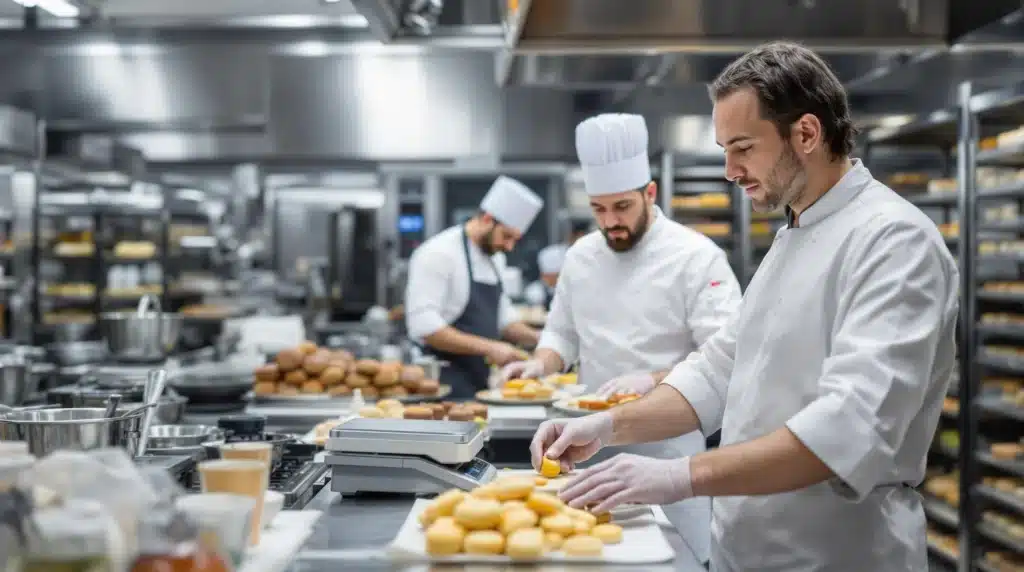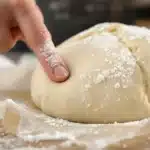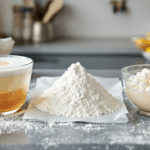You’ve landed your first baking gig, eager to dive in and contribute. You step into the bustling environment of a professional bakery or a large kitchen’s pastry department, and you start hearing titles being thrown around: “Commis, get me more flour!”, “Chef de Partie, check the proof on those loaves!”, “Ask the Sous Chef about the inventory.” It can feel like a foreign language at first. Unlike the often solitary nature of home baking, professional kitchens operate with a defined structure, a hierarchy often referred to as the kitchen brigade.
For newcomers, understanding this structure and the roles within it is crucial for navigating the workplace, knowing who to report to, understanding expectations, and envisioning a potential career path. What exactly does a Commis do? How is that different from a Chef de Partie? And what responsibilities fall under the Head Baker or Pastry Chef? Let’s demystify the typical kitchen hierarchy as it applies to the world of baking and pastry.
Why the Structure? The Purpose of the Kitchen Brigade
The concept of a strict kitchen hierarchy, known as the brigade de cuisine, was famously codified by chef Auguste Escoffier in the late 19th century. His goal was to bring order, efficiency, and clear lines of responsibility to large, complex hotel kitchens. While not every modern bakery or restaurant follows the classic brigade system to the letter (especially smaller establishments), the underlying principles of structure and defined roles remain highly relevant for several key reasons:
- Organization & Efficiency: In a high-volume production environment, clearly defined roles ensure that tasks are assigned logically, workflows run smoothly, and everyone knows their specific responsibilities. This prevents chaos and maximizes efficiency.
- Clear Chain of Command: The hierarchy establishes who reports to whom. This clarifies where instructions come from, who to ask questions of, and who is ultimately accountable for specific outcomes.
- Training & Skill Progression: The brigade system provides a natural pathway for learning and advancement. Individuals typically start in entry-level positions focusing on basic tasks and gradually progress to roles with more complex responsibilities and leadership duties as their skills develop.
- Consistency & Quality Control: Defined roles and responsibilities help ensure that recipes are followed correctly, techniques are executed consistently, and quality standards are maintained across all aspects of production.
Climbing the Ladder: Common Baking & Pastry Roles
The specific titles and exact structure can vary significantly depending on the size, type, and style of the operation (e.g., small artisan bakery vs. large hotel pastry department vs. high-volume production facility). However, here’s a general progression of common roles you might encounter in the baking and pastry world, starting from entry-level:
Entry Level: Dishwasher / Porter / Prep Assistant
- The Role: Often the very first step into a professional kitchen for those with little or no prior experience. The focus is primarily on cleaning (dishes, equipment, floors), sanitation, receiving deliveries, basic ingredient storage, and sometimes very simple prep tasks (peeling vegetables, washing produce – might be less common in pure baking roles but exists in larger kitchens).
- Importance: Absolutely vital for the smooth functioning and cleanliness of any kitchen. It’s demanding work but offers a crucial opportunity to observe the kitchen’s rhythm, demonstrate reliability and a strong work ethic, and potentially express interest in moving towards baking-specific tasks if you prove yourself capable and eager.
Commis Pastry / Baker’s Assistant / Apprentice (Entry-Level Baking)
- The Role: This is typically the first rung on the ladder specifically within the baking or pastry team. A Commis (French for “clerk” or “assistant”) works directly under the supervision of more senior cooks or chefs (like a Chef de Partie or Sous Chef). This role is heavily focused on learning.
- Responsibilities: Mastering the fundamentals. Extensive mise en place (accurately scaling ingredients, preparing basic components like simple syrups or crumb toppings), learning and practicing foundational techniques (basic mixing methods, simple dough handling), assisting senior staff with their tasks, executing simpler production items (e.g., panning cookies, scooping muffins, maybe mixing basic batters), and a significant amount of cleaning and organizing the station. Precision, speed, cleanliness, and the ability to follow instructions exactly are paramount.
- The Goal: To build a solid foundation of essential skills, develop speed and efficiency, internalize sanitation practices, and understand the bakery’s workflow and standards.
Pastry Cook / Baker / Demi-Chef de Partie (Skilled Production)
- The Role: After gaining experience and proving competence as a Commis, one might progress to Pastry Cook or Baker. A Demi-Chef de Partie is often a title indicating a senior cook within a station, capable of working more independently.
- Responsibilities: Possesses a solid grasp of fundamental techniques and can work with less direct supervision. Responsible for independently executing specific recipes and producing certain items consistently and efficiently (e.g., mixing specific types of doughs or batters, shaping particular breads or pastries, baking off products, making standard creams, sauces, or fillings). They might be assigned to a specific area or rotate through different tasks. May assist in guiding or training Commis bakers. Maintaining station cleanliness and quality control for their assigned products is key.
- The Goal: To refine technical skills across a broader range of products, increase speed and consistency under pressure, and develop a deeper understanding of production planning and timing.
Chef de Partie – Pastry (CDP / Station Chef / Section Leader) (Specialized Leadership)
- The Role: Common in larger kitchens (hotels, large restaurants, production bakeries) with distinct sections. The Chef de Partie is in charge of a specific station or area of production. Examples include a Bread Baker (focused solely on bread), a Cake Decorator, a Chocolatier, a Plated Desserts station chef (in a restaurant), or a Viennoiserie specialist.
- Responsibilities: Overseeing all aspects of production within their designated station. Ensuring the quality, consistency, and timely execution of all items produced by their section. Mastering the advanced techniques relevant to their specialty. Managing the inventory and ordering specific ingredients for their station. Training and supervising any Commis or Pastry Cooks working on their section. Often contributes ideas for new menu items or specials related to their area of expertise. Reports directly to the Sous Chef or Head Pastry Chef.
- The Goal: To become a highly skilled specialist in a particular area of pastry or baking, demonstrate leadership capabilities within a team, and manage the operations of a specific section effectively.
Sous Chef – Pastry (Second in Command / Management)
- The Role: The direct assistant and right-hand person to the Head Pastry Chef or Head Baker. Sous means “under” in French – they are second in command. They step in to lead the department when the Head Chef is absent.
- Responsibilities: This role involves a significant shift towards management while often retaining hands-on involvement. Overseeing the day-to-day operations of the entire pastry/baking department. Creating staff schedules, supervising and training junior staff, assisting the Head Chef with menu development, recipe testing, and costing. Managing overall inventory, ordering supplies, and ensuring adherence to budgets. Upholding quality control and sanitation standards across the board. In restaurant settings, they might expedite dessert orders during service. They need to be able to fill in competently on any station if needed. Acts as the crucial link between management/Head Chef and the production team.
- The Goal: To develop strong leadership, organizational, and operational management skills, alongside maintaining high technical proficiency. This role is often the final stepping stone before becoming a Head Chef.
Executive Pastry Chef / Head Baker / Chef Pâtissier (Department Leader)
- The Role: The top position within the pastry or baking department. This individual is responsible for the overall direction, vision, quality, efficiency, and financial performance of their area.
- Responsibilities: Full creative control over menu development and recipe creation/standardization. Managing the department budget, controlling food costs and labor costs. Hiring, firing, training, and managing all pastry/baking staff. Overseeing all aspects of production, quality control, and sanitation. Sourcing ingredients and managing vendor relationships. Significant administrative duties (paperwork, scheduling, inventory analysis). While they possess expert technical skills, their day-to-day focus is often more on management, planning, and leadership than hands-on production (especially in very large operations, though many remain hands-on in smaller settings). Reports to the overall Executive Chef (in a hotel/restaurant) or the Owner/General Manager.
- The Goal: To lead a successful, high-quality, efficient, and often profitable baking or pastry operation through a combination of culinary expertise, creativity, strong leadership, and business acumen.
Variations and Smaller Operations
It’s crucial to remember that this detailed hierarchy is most common in larger establishments.
- Small Independent Bakeries/Cafes: Roles are often much more fluid and combined. A single “Baker” or “Pastry Cook” might handle a wide range of tasks from mixing and shaping to baking and finishing. The “Head Baker” is frequently the owner and is deeply involved in daily production while also handling all management aspects. The entire team might only consist of 2-5 people.
- Restaurant Pastry Departments: Often smaller than large bakery operations. May consist of just an Executive Pastry Chef and one or two Pastry Cooks or Assistants, focusing primarily on plated desserts for service, perhaps some bread for the restaurant, and maybe small Mignardise (petit fours).
Navigating Your Career Path
Understanding this general structure helps you plan your journey:
- Start Strong: In any entry-level role, focus on mastering the basics flawlessly. Be punctual, reliable, clean, organized, efficient, and demonstrate an undeniable eagerness to learn and follow directions.
- Observe and Absorb: Pay close attention to how senior staff members work, how they organize their time, their techniques, and their problem-solving approaches.
- Ask Thoughtful Questions: Show your interest in learning the “why” behind techniques, but choose appropriate times (not during the middle of a chaotic rush).
- Seek Opportunities: Don’t be afraid to volunteer for slightly more challenging tasks (with permission) to demonstrate your growing skills and initiative.
- Continuous Learning: Read professional baking books, follow reputable bakers online, practice techniques on your own time if possible.
- Communicate Your Goals: Once you’ve proven yourself reliable and skilled at your current level, politely express your interest in learning new skills or taking on more responsibility to your supervisor or chef.
- Be Patient: Moving up takes time, consistent hard work, demonstrated skill, and proving your reliability and positive attitude.
Conclusion: Understanding Your Place and Path
The kitchen hierarchy, whether a formal brigade system or a more fluid structure in a smaller shop, provides the framework for organization, training, and workflow in professional baking environments. From the essential cleaning and prep duties of the entry levels to the skilled production of Pastry Cooks and Chefs de Partie, and onto the operational and creative leadership of Sous Chefs and Head Chefs/Bakers, each role plays a vital part.
Understanding these typical roles and responsibilities helps aspiring bakers know what to expect at each stage, set realistic career goals, and appreciate the journey of skill development involved. While titles and structures vary, the underlying principles of starting with fundamentals, demonstrating reliability and eagerness, mastering techniques through practice, and gradually taking on more responsibility form the common pathway for building a successful and rewarding career in the dynamic world of professional baking and pastry arts.







